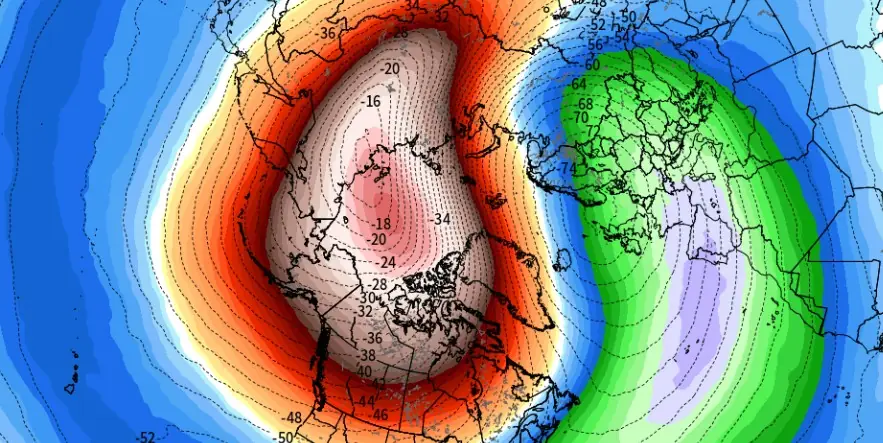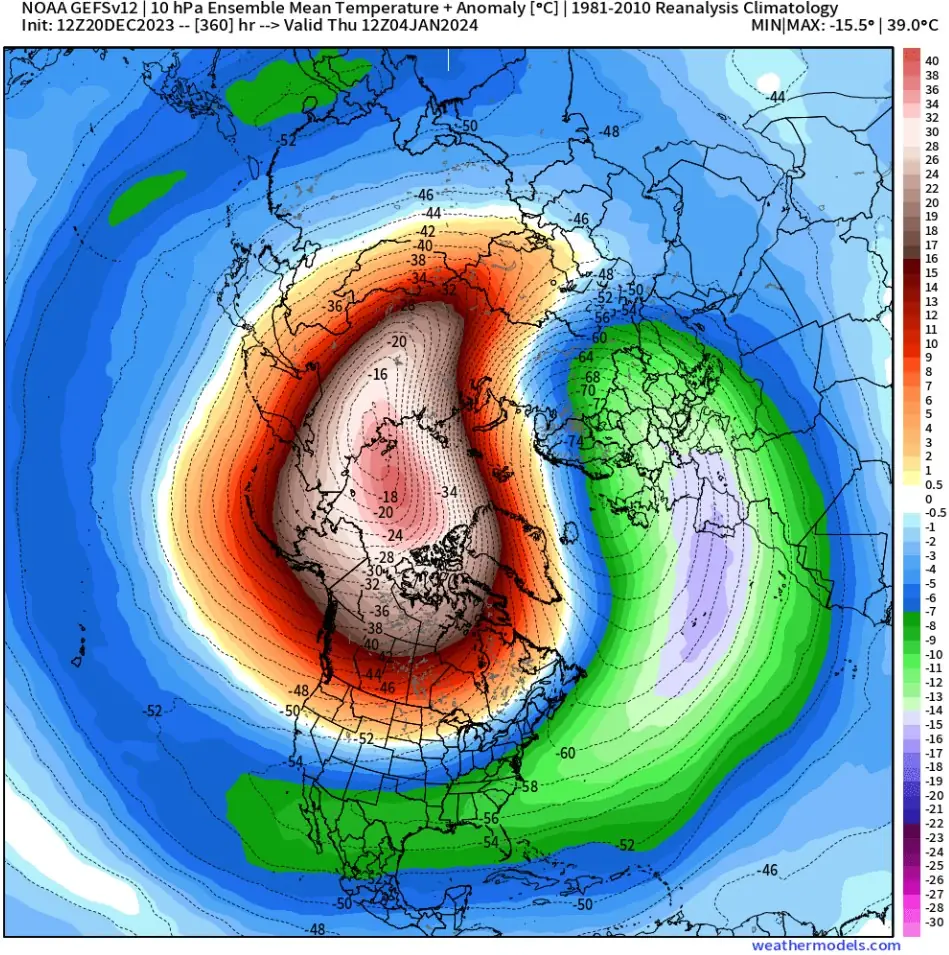Potential for disrupted polar vortex in January 2024

Current forecasts indicate a strong stratospheric warming event in January 2024, potentially leading to a weakened Polar Vortex and a significant weather pattern shift across the United States and Europe.
Meteorologists are closely monitoring a developing stratospheric warming event, forecasted for January 2024, which could signal a weakening or even collapse of the polar vortex. This significant atmospheric shift may herald a much-anticipated change in the weather patterns across the United States and Europe as winter deepens.
Understanding the polar vortex is key to grasping mid-winter weather shifts. Essentially a broad winter circulation, the polar vortex extends high into the stratosphere, impacting weather events in the troposphere below. This system, divided into upper (stratospheric) and lower (tropospheric) parts, plays a crucial role in forming the winter climate across the Northern Hemisphere.
Currently, the polar vortex is normal in size but displaced due to a high-pressure area over the North Pacific. This distortion is evident in mid-stratospheric temperature and geopotential height observations. A small warming wave marks the beginning of more dramatic changes anticipated with the upcoming stratospheric warming event.
The strength and structure of the polar vortex significantly influence mid-latitude weather. A stable and robust polar vortex typically confines colder Arctic air, leading to milder conditions in the United States. Conversely, a weak or disrupted polar vortex allows cold air to spill into mid-latitudes, bringing colder, snowier conditions. Such disruptions are often marked by Sudden Stratospheric Warming (SSW) events, where the winds within the vortex weaken, indicating potential changes in weather patterns.
As we approach 2024, forecasts predict a major slowdown of the polar vortex combined with a significant warming event.
Various models, including ECMWF and GEFS, indicate a substantial weakening in early January, potentially leading to a full collapse of the polar vortex. This event, characterized by a dramatic temperature and pressure rise in the stratosphere, can disturb the circulation, initiating a collapse of the polar vortex and subsequently altering weather patterns at the surface.

Typically following a stratospheric warming event, high-pressure anomalies descend from the stratosphere to the surface, weakening the jet stream and unlocking Arctic cold air. This pattern is visible in surface pressure and temperature forecasts, suggesting colder anomalies over the United States and a potential for northerly flows in Europe.
The implications of a weakened polar vortex are profound, offering the possibility of a colder and snowier January compared to the warmer conditions experienced in December. While specifics are still emerging, the trends indicate a marked shift in weather patterns.
References:
1 Early signs show a Major Shift in the Polar Vortex, with a Strong Stratospheric Warming Wave now likely to bring a more Wintry Weather pattern in January – Severe Weather Europe – December 21, 2023
Featured image: NOAA/GEFS, weathermodels.com

i never like polar vortex tks for post